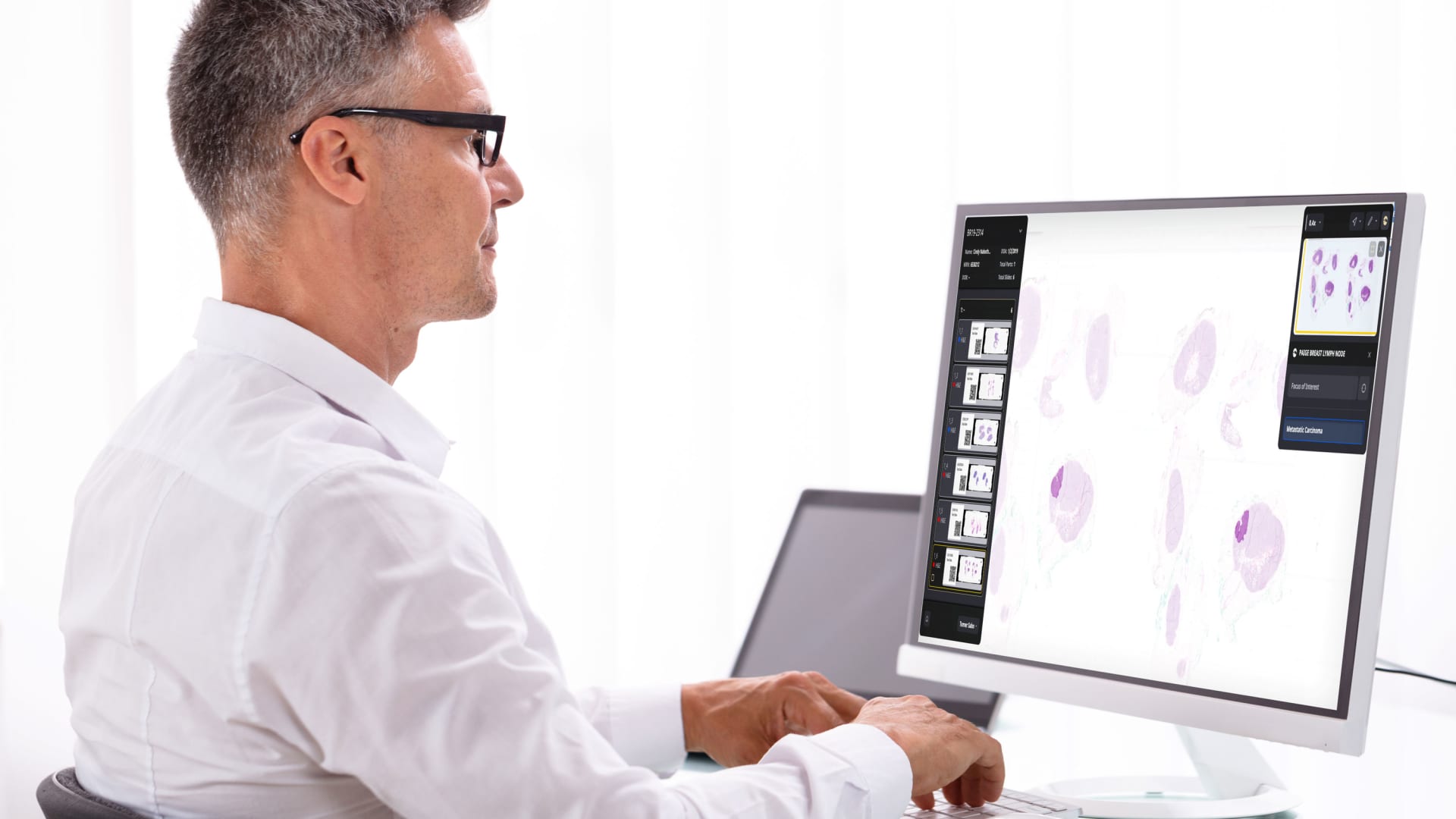Doctors working with Paige technology
Source: Paige
Microsoft announced Thursday it is partnering with Paige, a digital pathology provider, to develop the world’s largest image-based artificial intelligence model for cancer identification.
The AI model is being trained on an enormous amount of data, including billions of images, according to a release. It has the ability to identify both common and rare forms of cancer, which are known to be challenging to diagnose. By utilizing this technology, doctors will have the support they need to manage staffing shortages and increasing caseloads.
Paige specializes in developing digital and AI-powered solutions for pathologists, who are responsible for analyzing bodily fluids and tissues to make diagnoses. This field of medicine is crucial for determining proper patient treatment.
“The pathologist’s diagnosis is the pivotal step in the entire medical process,” said Thomas Fuchs, co-founder and chief scientist at Paige, in an interview with CNBC.
Despite the vital role pathologists play, their workflow has remained relatively unchanged for the past century and a half. Typically, pathologists examine tissue samples on glass slides under microscopes. While this method is reliable, any missed details can have severe consequences for patients.
To improve accuracy and efficiency, Paige has been working to digitize the pathologists’ workflow.
Doctors working with Paige technology
Source: Paige
The Food and Drug Administration (FDA) has approved Paige’s viewing tool, called FullFocus, which allows pathologists to examine digital slides on screens instead of through microscopes. Paige has also developed an AI model that assists in identifying breast cancer, colon cancer, and prostate cancer when displayed on the screen.
Challenges of Digital Pathology
Paige is the only company that the FDA has approved for using AI as a secondary tool in identifying prostate cancer. According to CEO Andy Moye, this approval may be due in part to the challenges of data storage and collection.
Digitizing a single slide can require considerable storage space, which can be costly for smaller health systems. Paige, with its wealth of data from the Memorial Sloan Kettering Cancer Center, has managed to overcome these barriers. In fact, Paige possesses ten times more data than Netflix.
To expand its operations and enhance the AI model’s capabilities, Paige has partnered with Microsoft. Over the past year and a half, Paige has utilized Microsoft’s cloud storage and supercomputing infrastructure to develop an advanced AI model.
While Paige’s original AI model utilized over 1 billion images from 500,000 slides, the model built in collaboration with Microsoft is significantly larger. Training on 4 million slides, it has the capacity to identify both common and rare forms of cancer. According to Paige, it is the largest computer vision model ever announced publicly.
Moye believes that the impact of this AI model in cancer care will be comparable to the release of ChatGPT. He stated, “This is sort of a groundbreaking, land-on-the-moon kind of moment for cancer care.”
Paige is also exploring the integration of predictive modeling to provide pathologists and patients with easy access to biomarker and genomic mutation information in the future.
Microsoft Health Futures Vice President and Managing Director, Desney Tan, emphasizes that Microsoft’s infrastructure is a crucial component of the partnership, but their collaboration goes beyond that. Microsoft is actively involved in developing new algorithms, detection methods, and diagnostics that Paige aims to deliver in the coming years.
However, Tan clarifies that the technology is intended to support pathologists rather than replace them. He compares AI to tools like stethoscopes and X-ray machines, stating that it is meant to be wielded by humans.
Paige and Microsoft will publish a paper about the AI model through Cornell University’s preprint server arXiv. The paper quantifies the model’s impact and demonstrates its superiority over existing academic models. Paige plans to submit the research to the scientific journal Nature after peer review, which is a lengthy process. Additionally, Paige must undergo thorough testing and collaborate with regulators to ensure the safety and accuracy of their model before making it available as a product.
In the end, Fuchs believes that the AI model will address the storage challenges faced by health systems while facilitating quicker diagnoses for pathologists. This technology will have a significant impact, particularly on overwhelmed pathologists working in community clinics and smaller health systems, where access to healthcare is limited.
Denial of responsibility! Vigour Times is an automatic aggregator of Global media. In each content, the hyperlink to the primary source is specified. All trademarks belong to their rightful owners, and all materials to their authors. For any complaint, please reach us at – [email protected]. We will take necessary action within 24 hours.


